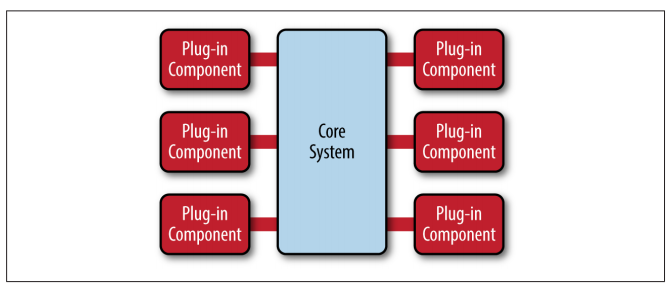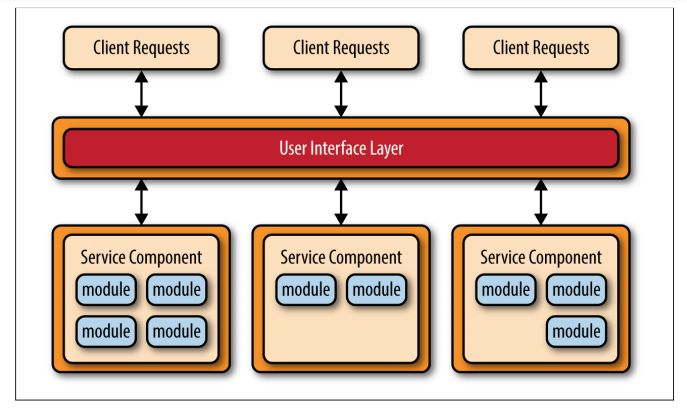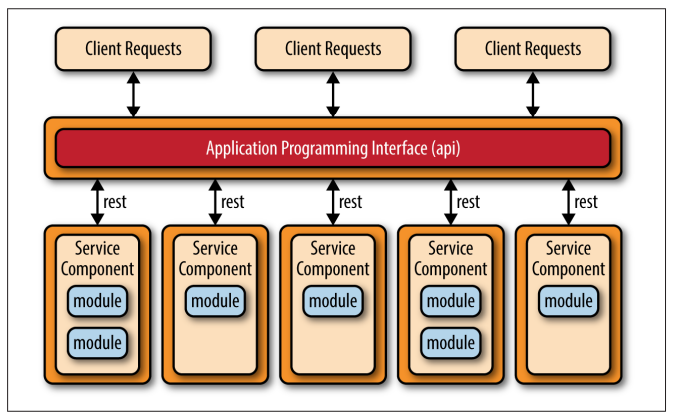...
Event Driven Architecture
The event-driven architecture pattern is a popular distributed asynchronous architecture pattern used to produce highly scalable applications. It is also highly adaptable and can be used for small applications and as well as large, complex ones. The event-driven architecture is made up of highly decoupled, single-purpose event processing components that asynchronously receive and process events.
Microkernal/Plug-In Architecture
The microkernel architecture pattern (sometimes referred to as the plug-in architecture pattern) is a natural pattern for implementing product-based applications. A product-based application is one that is packaged and made available for download in versions as a typical third-party product
The microkernel architecture pattern allows you to add additional application features as plug-ins to the core application, providing extensibility as well as feature sep‐ aration and isolation.
The core system needs to know about which plug-in modules are available and how to get to them. One common way of implementing this is through some sort of plug-in registry. This registry contains information about each plug-in module, including things like its name, data contract, and remote access protocol details (depending on how the plug-in is connected to the core system).
Plug-in modules can be connected to the core system through a variety of ways, including OSGi (open service gateway initiative), messaging, web services, or even direct point-to-point binding (i.e., object instantiation).
Example: Perhaps the best example of the microkernel architecture is the Eclipse IDE. Downloading the basic Eclipse product provides you little more than a fancy editor. However, once you start adding plug-ins, it becomes a highly customizable and useful product.
Scalability Rating: Low Analysis: Because most microkernel architecture implementa‐ tions are product based and are generally smaller in size, they are implemented as single units and hence not highly scalable. Depending on how you implement the plug-in modules, you can sometimes provide scalability at the plug-in feature level, but overall this pattern is not known for producing highly scala‐ ble applications.
Ease of development Rating: Low Analysis: The microkernel architecture requires thoughtful design and contract governance, making it rather complex to implement. Contract versioning, internal plug-in registries, plug-in granularity, and the wide choices available for plug-in connectivity all contribute to the complexity involved with implementing this pattern.
MicroServices Architecture
Core Concepts
- separately deployed units
- distributed architecture, meaning that all the components within the architecture are fully decoupled from one other and accessed through some sort of remote access protocol (e.g., JMS, AMQP, REST, SOAP, RMI, etc.)
Service components contain one or more modules (e.g., Java classes) that represent either 27 a single-purpose function (e.g., providing the weather for a specific city or town) or an independent portion of a large business application (e.g., stock trade placement or determining auto-insurance rates). Designing the right level of service component granularity is one of the biggest challenges within a microservices architecture.
Api - REST Based Topology
The API REST-based topology is useful for websites that expose small, self-contained individual services through some sort of API (application programming interface).
References
| Reference | URL |
|---|---|
| Software Architecture Patterns | https://github.com/gg-daddy/ebooks/blob/master/software-architecture-patterns.pdf |
...


